Indoor greenhouse ideas – 5 DIYs to grow plants at home
It's easy to transform everyday objects into greenhouses you can keep in your home

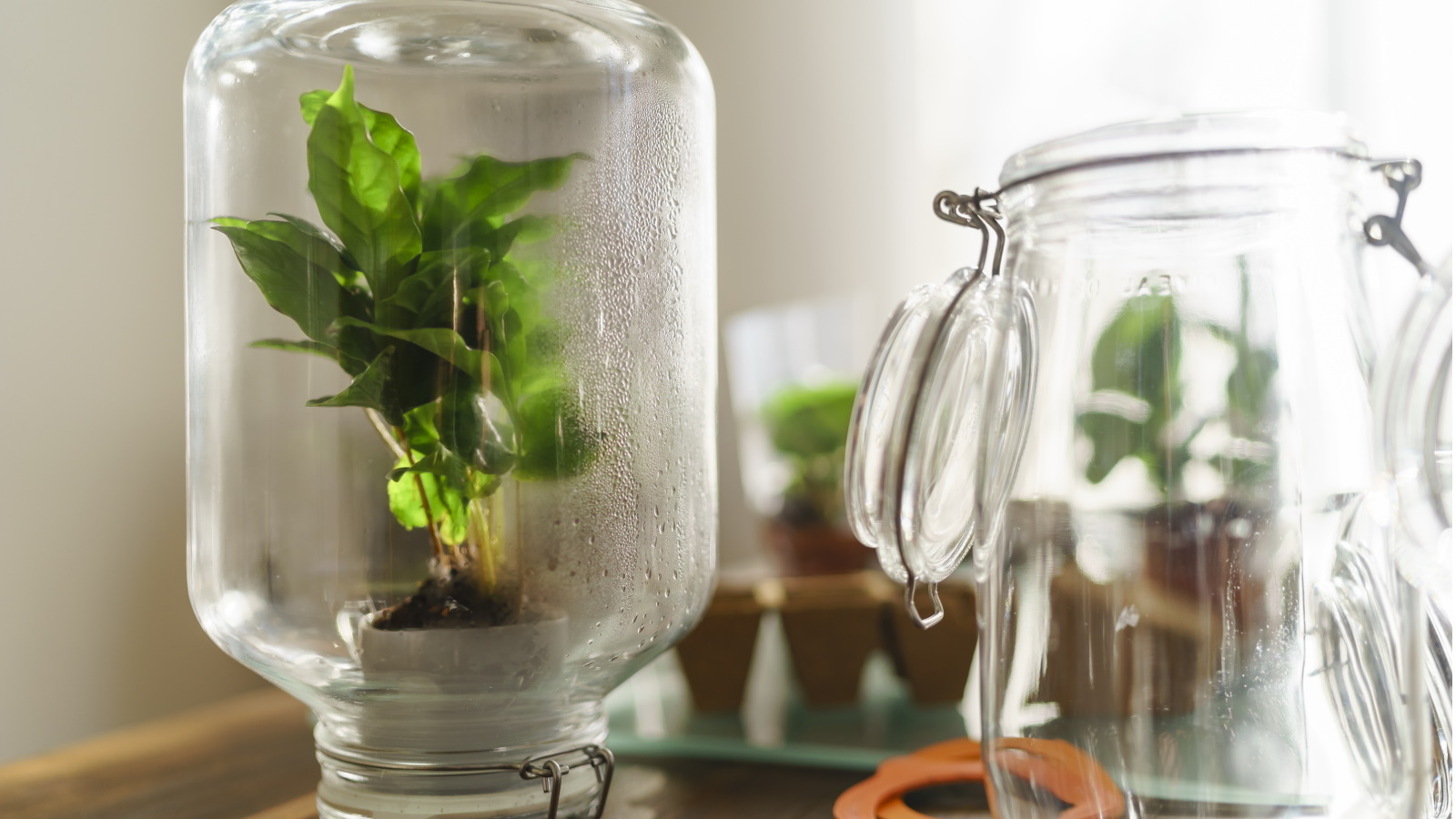
Greenhouses are valuable to gardeners. They are typically glass structures that help to germinate seeds and support the growth of young plants by keeping them warm and allowing lots of natural light in.
If you live in an urban environment or don't have the capacity for a greenhouse, you may have never considered using one. However, indoor greenhouses have become increasingly popular, and many plant enthusiasts opt for them as an indoor growing system to support their plants.
While there are many indoor greenhouse ideas on the market, like this miniature indoor greenhouse from Amazon, with a bit of creativity you can turn items in your home into a miniature indoor greenhouse. All you need to do to create an effective indoor greenhouse is provide optimal conditions of light, warmth and moisture. Here's our list of DIY ideas to try with advice from experts to ensure they are successful.
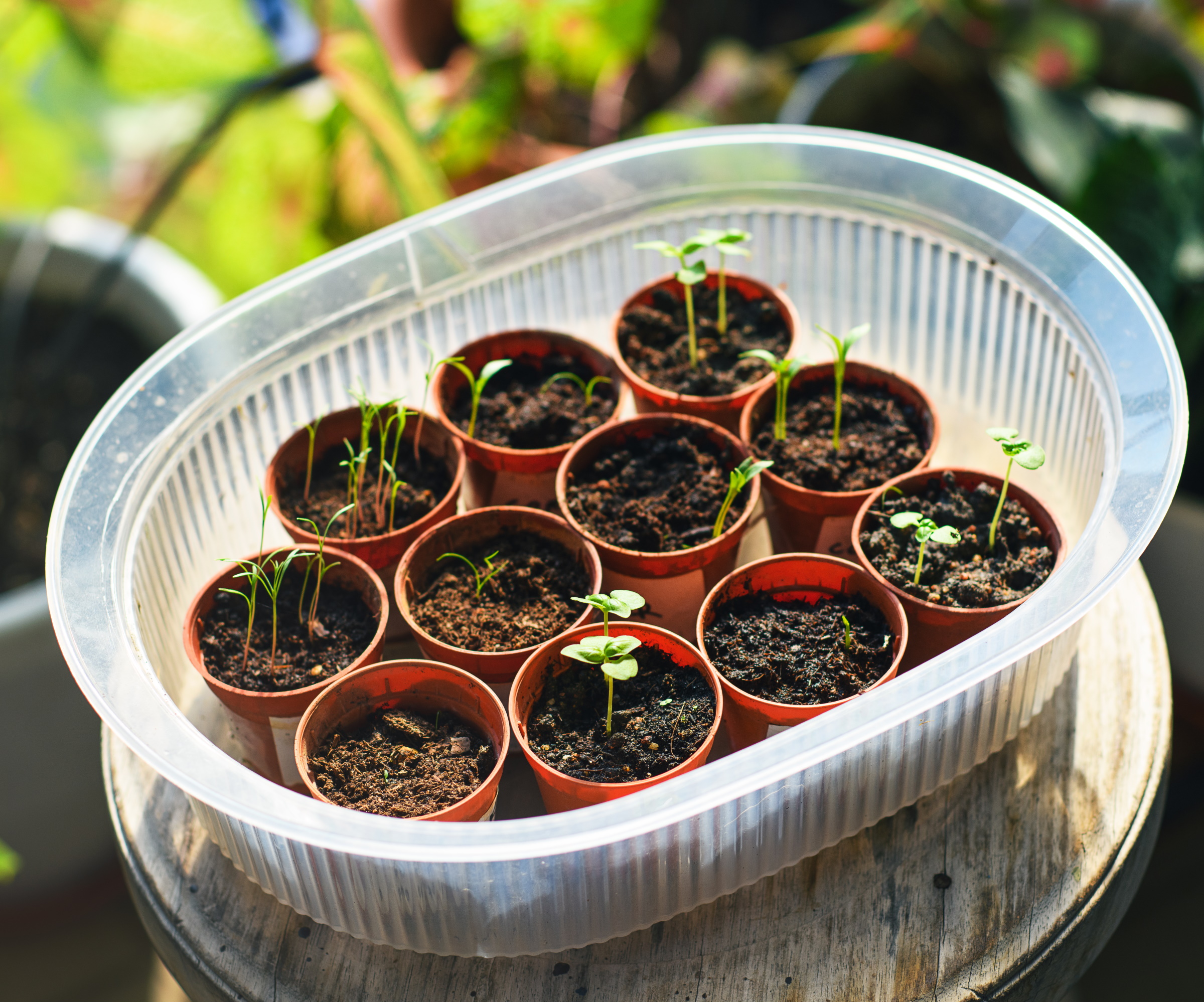
4 DIY indoor greenhouse ideas
Just because you don't have a yard or the space for a greenhouse doesn't mean you can't benefit from them. Our expert list of ideas can help you to create a DIY greenhouse to keep inside your home so that you can effectively support the growth of your plants indoors.
1. Glass cabinet
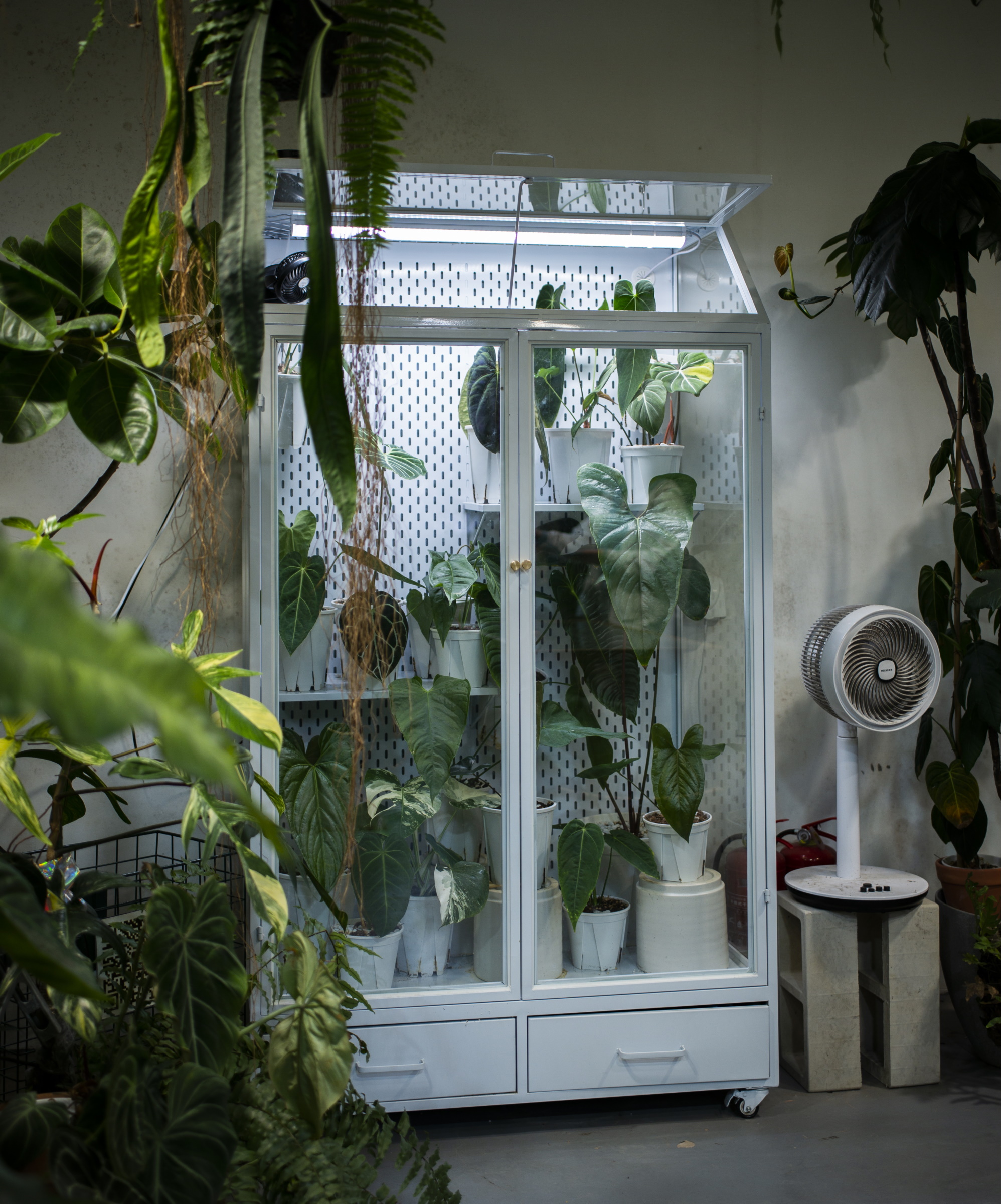
This one is easy. It just requires using a glass cabinet as a greenhouse, like this beautiful cabinet from Anthropologie.
'If the cabinet has timber shelves, you want to line these with plastic otherwise they'll warp and eventually fall apart from all the moisture,' says Annette Hird, expert gardener at Easy Urban Gardens.
'The most important thing to remember with this type of set-up is that your plants will need light, airflow and humidity,' says Annette. 'My first suggestion would be to invest in a proper grow light and hang that inside at the top of the cabinet so the light shines down on the plants,' she adds.
Design expertise in your inbox – from inspiring decorating ideas and beautiful celebrity homes to practical gardening advice and shopping round-ups.
Many people creating indoor greenhouses from cabinets attach grow lights, like these grow lights from Amazon, and place humidifiers inside to help heat the greenhouse. This will provide optimal conditions for growth, as long as you also take care to occasionally open the cabinet to provide airflow.
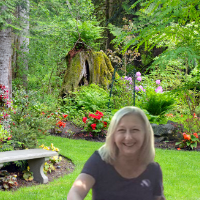
Annette Hird has an Associate Diploma in Horticulture and is an urban gardening expert. She has worked as a professional propagator and managed, maintained and improved many urban and rural gardens. She also enjoys growing her own fruit, vegetables, herbs and flowers as well as many different types of ornamental plants.
2. Glass coffee table
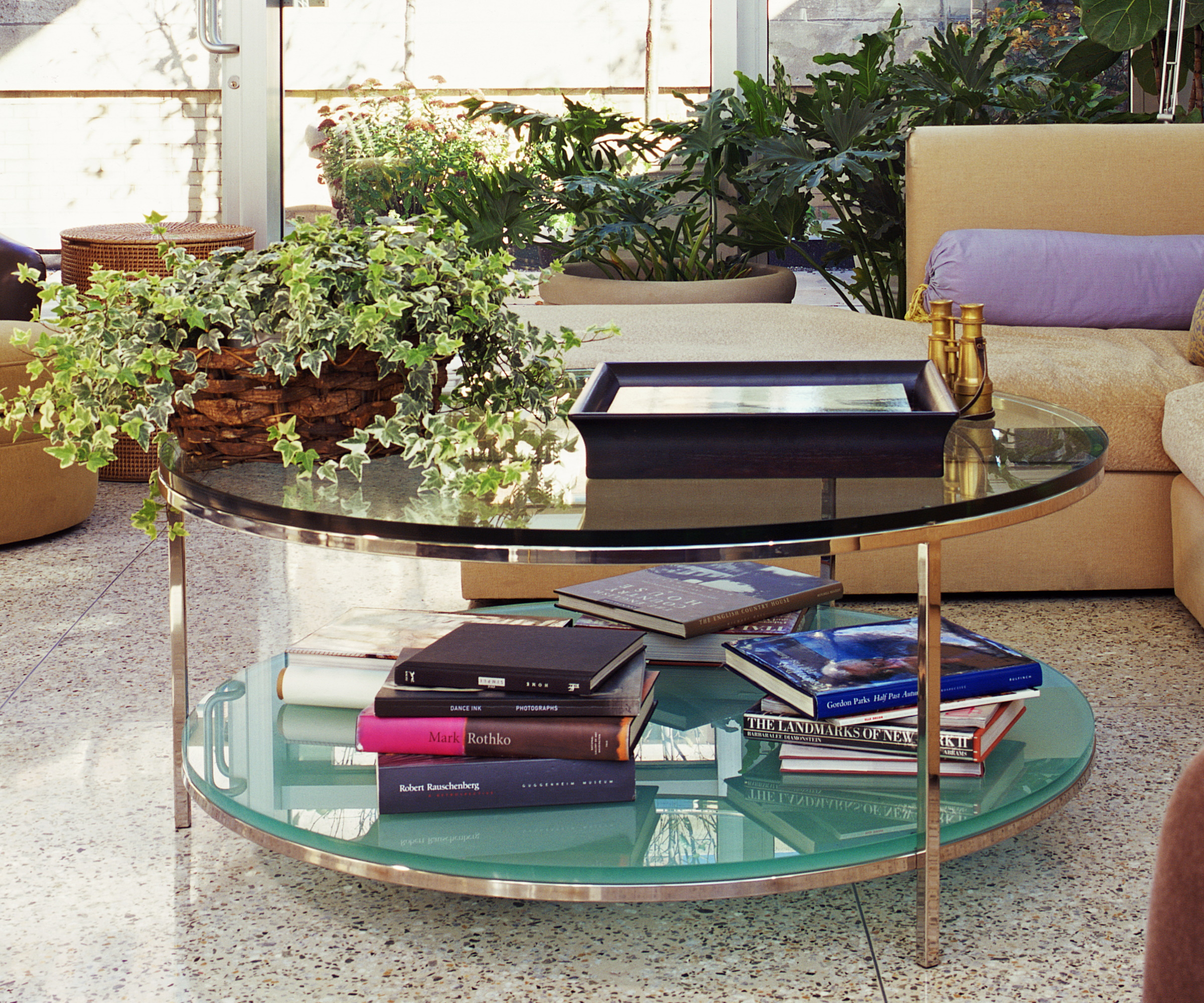
Another indoor greenhouse idea that doesn't require too much effort is using a coffee table with a glass top and shelf underneath to hold the plants. There are many on the market that would work, such as this cocktail table from Ashley Furniture.
'Line the shelf with some plastic and then find some shallow trays that will fit neatly on the shelf,' says Annette.
'Fill these trays with pebbles so that you can sit your pot plants on top of them. Add some slimline LED light strips around the frame that holds the glass in place,' she adds.
By placing the plants on pebble trays, like this humidity tray from Amazon, you can help to create a humid environment for the plants. Sunlight coming through the glass top will likewise increase warmth and encourage growth.
'While this is not a completely enclosed greenhouse, it will still work as a good environment for many types of indoor plants and makes a great focal piece in your living room,' says Annette.
3. Plastic food container
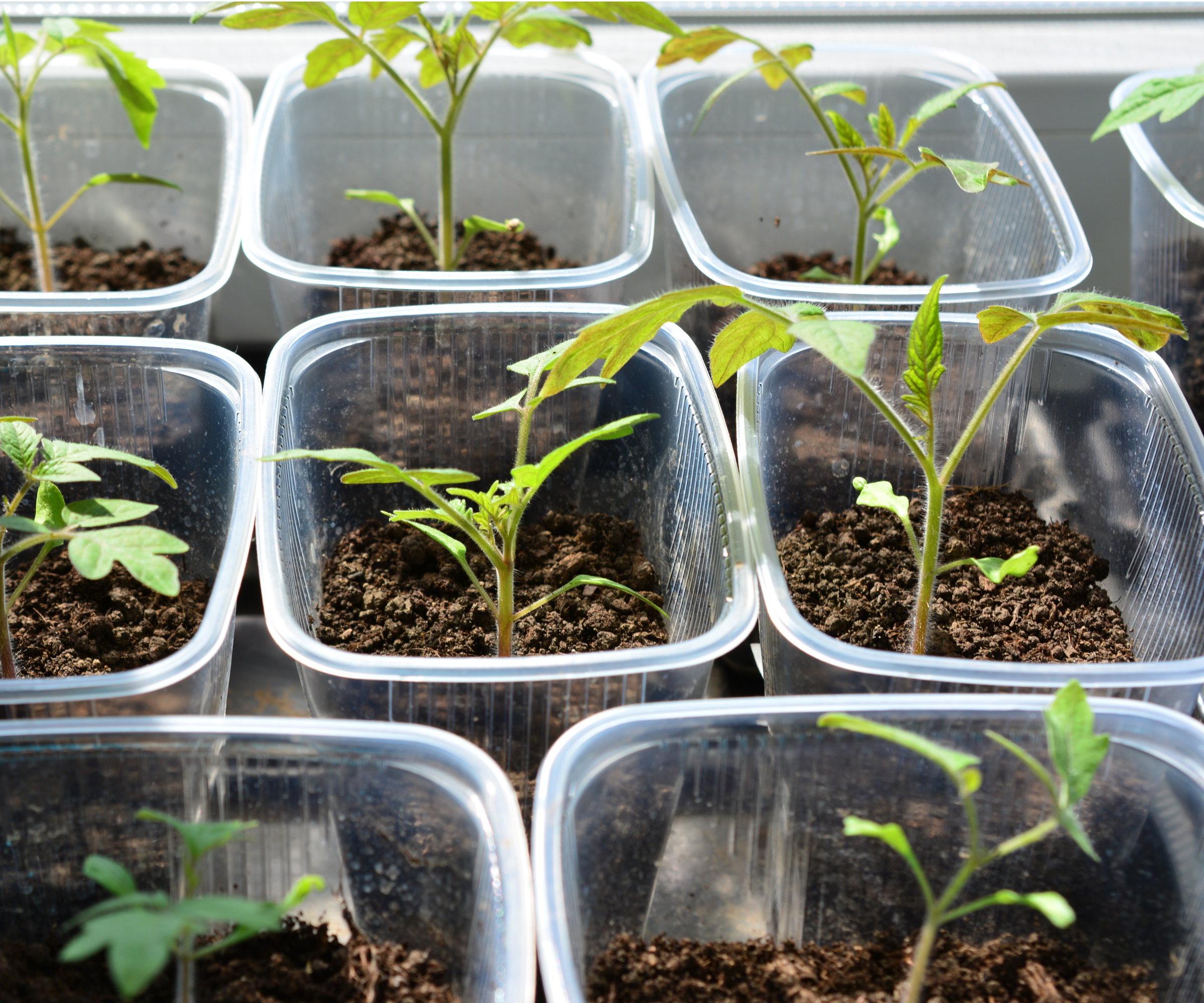
You can repurpose plastic food containers to create DIY indoor greenhouse ideas.
'As far as DIY materials for indoor greenhouses goes, my favorite by far is the clam-shell plastic container that strawberries and grapes are often sold in,' says Meredith Bishop, sustainable flower grower and owner of Bloom and Bounty.
'They provide ample room in which roots can grow - often as much as 3-4 inches of soil depth below the lip of the container - and come with pre-made holes for airflow and oxygen uptake. They also have a lid, which ensures that the greenhouse will hold on to humidity during germination, but can be left open as seedlings grow taller,' she adds.
For this DIY greenhouse to be effective, make sure to keep your container in a bright spot with plenty of natural light, such as a windowsill.

Meredith Bishop is a sustainable flower grower specializing in old-world blooms grown from seed in her gardens in urban Nashville, Tennessee. She also operates a retail design studio in Nashville, and enjoys teaching, speaking and writing about all aspects of flower gardening.
4. Storage box
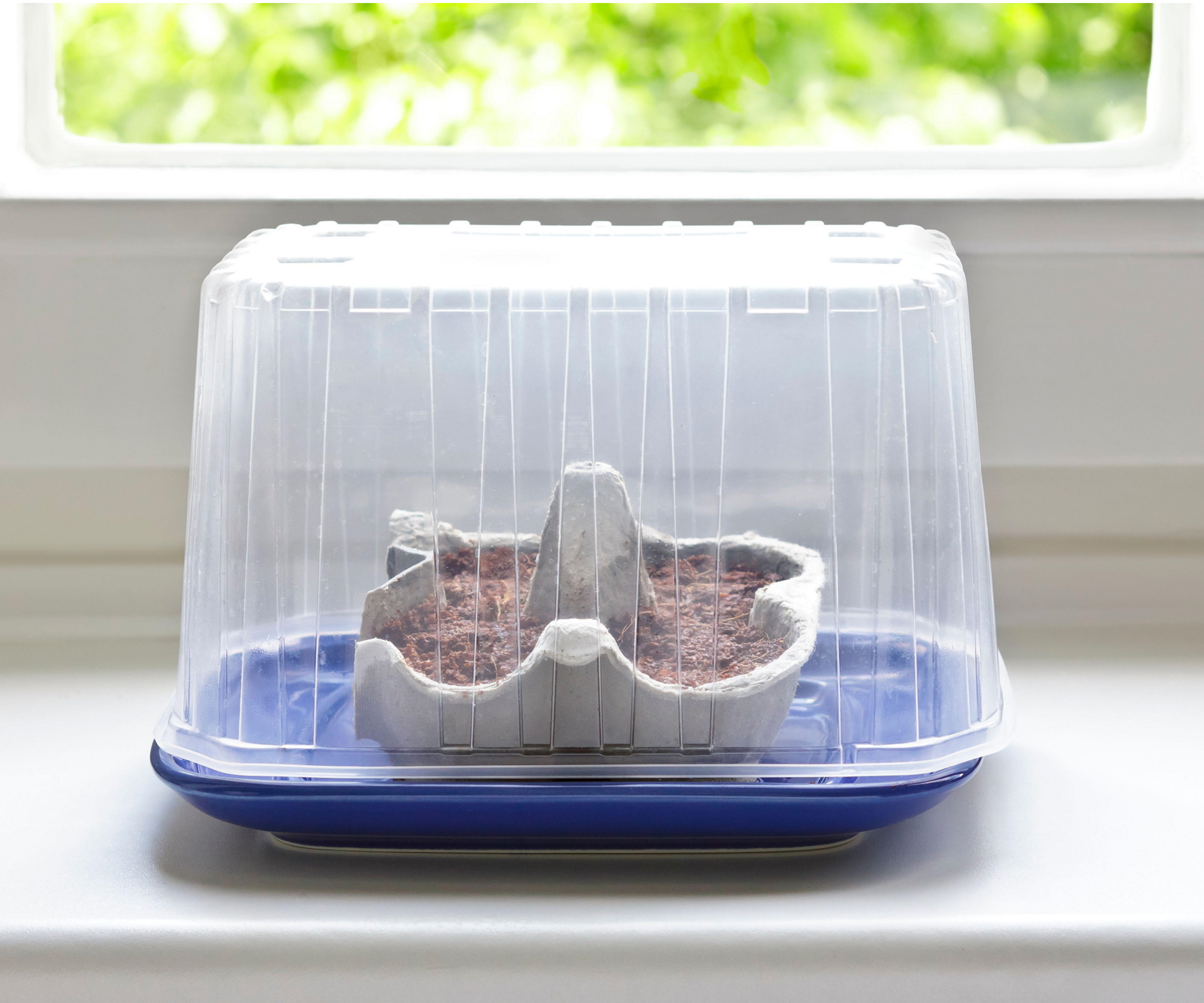
On a larger scale than food containers but working in a similar way, you can place your plants in a large, clear storage container to create a greenhouse effect.
'This is perfect for those wanting to grow larger plants indoors for longer stretches,' says Meredith. 'Provide plenty of small holes for drainage and airflow, and be sure the container has a tight fitting lid to build up ample humidity,' she adds.
Like the glass cabinet greenhouses, you can add a grow light or humidifier to provide optimal conditions and encourage growth of young plants.
'Once danger of frost has passed and warm temperatures have arrived, you can move your DIY indoor greenhouse outdoors for the plants to slowly acclimate to outside temperatures before being transplanted into the garden,' says Meredith.
FAQs
Do DIY indoor greenhouses work?
It's very easy to repurpose household items into DIY greenhouses that will effectively support the growth of your plants and seedlings.
'Once you understand what makes seeds germinate and grow, the world of DIY greenhouse materials is truly endless,' says Meredith Bishop, sustainable flower grower and owner of Bloom and Bounty.
You just have to ensure your DIY indoor greenhouse provides plenty of light, moisture and warmth to encourage growth of your plants. Replicate the environment an outdoor greenhouse provides, such as a clear front to allow plenty of direct light in, and your DIY indoor greenhouse should work well.
If you have never considered using a greenhouse before because you haven't had the space or even a backyard to keep it, why not consider creating your own indoor greenhouse ideas? These are smaller and convenient to keep in the home, and there are lots of household items you can use to create one. Just ensure to provide the optimal environment and your DIY will be successful. You can likewise make DIY seed tray alternatives from everyday items to help germinate your seeds indoors.

Tenielle is a Gardens Content Editor at Homes & Gardens. She holds a qualification in MA Magazine Journalism and has over six years of journalistic experience. Before coming to Homes & Gardens, Tenielle was in the editorial department at the Royal Horticultural Society and worked on The Garden magazine. As our in-house houseplant expert, Tenielle writes on a range of solutions to houseplant problems, as well as other 'how to' guides, inspiring garden projects, and the latest gardening news. When she isn't writing, Tenielle can be found propagating her ever-growing collection of indoor plants, helping others overcome common houseplant pests and diseases, volunteering at a local gardening club, and attending gardening workshops, like a composting masterclass.